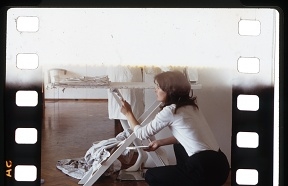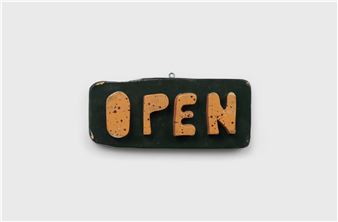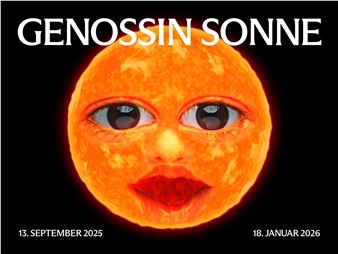56 Artillery Lane
For this exhibition ‚Äėhome‚Äô is imagined as a space for social, sexual and political agency, and the 'domestic‚Äô as a stage on which kinship and self are formed and transformed through acts of love, cruelty and indifference.
A group of works from the recent past and present has been gathered for 56 Artillery Lane alongside a weekly live programme. Visual vocabularies range from bodily waste and bacterial growth to intimate self-imaging. Sculptural forms make reference to temporary shelter and collective occupation, while films are diaristic, improvised and quasi-fictional. The archive is invoked as a ‚Äėhomemaking‚Äô space. For instance, photographic ‚Äėgenomegrams‚Äô by Fiona Clark describe a personal response to trauma, Ingrid Pollard‚Äôs film reflects on her parents' correspondence and Barbara T. Smith‚Äôs books comprise Xerox impressions of the artist‚Äôs body and images of her children. Installations by Martine Syms and Ben Burgis & Ksenia Pedan work directly with the buildings‚Äô fabric, while a film by Jenna Bliss ‚Äď commissioned for the exhibition ‚Äď explores the class, race and gender dynamics of drug use within domestic contexts in Puerto Rico and New York. Colonial legacies and indigenous activism are explored as well as gentrification and familial histories. The exhibition provides a partial map of the domestic as an unstable zone.

Recommended for you
For this exhibition ‚Äėhome‚Äô is imagined as a space for social, sexual and political agency, and the 'domestic‚Äô as a stage on which kinship and self are formed and transformed through acts of love, cruelty and indifference.
A group of works from the recent past and present has been gathered for 56 Artillery Lane alongside a weekly live programme. Visual vocabularies range from bodily waste and bacterial growth to intimate self-imaging. Sculptural forms make reference to temporary shelter and collective occupation, while films are diaristic, improvised and quasi-fictional. The archive is invoked as a ‚Äėhomemaking‚Äô space. For instance, photographic ‚Äėgenomegrams‚Äô by Fiona Clark describe a personal response to trauma, Ingrid Pollard‚Äôs film reflects on her parents' correspondence and Barbara T. Smith‚Äôs books comprise Xerox impressions of the artist‚Äôs body and images of her children. Installations by Martine Syms and Ben Burgis & Ksenia Pedan work directly with the buildings‚Äô fabric, while a film by Jenna Bliss ‚Äď commissioned for the exhibition ‚Äď explores the class, race and gender dynamics of drug use within domestic contexts in Puerto Rico and New York. Colonial legacies and indigenous activism are explored as well as gentrification and familial histories. The exhibition provides a partial map of the domestic as an unstable zone.
Artists on show
- Anicka Yi
- Anna Szaflarski
- Barbara T. Smith
- Ben Burgis
- Chantal Akerman
- Fiona Clark
- Georgie Nettell
- Ingrid Pollard
- Jenna Bliss
- Ksenia Pedan
- Las Nietas de Nonó
- Lucy Clout
- Lucy Orta
- Maria PiniŇĄska-BereŇõ
- Martine Syms
- Merata Mita
- Morag Keil
- Phoebe Davies
- Rehana Zaman
- Richard Fung
- Rudy Loewe
- Stanley Spencer
- Steve Reinke

 ARTISTS
ARTISTS













